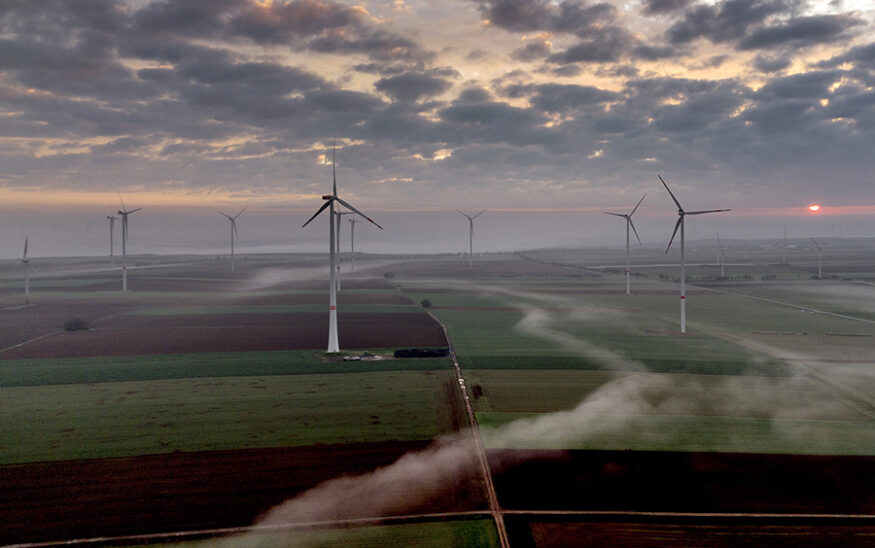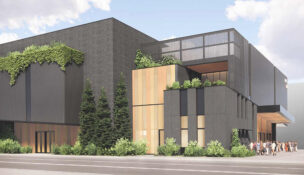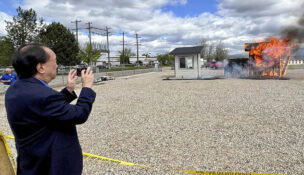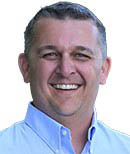Report: Wind development trending in right direction
By: The Associated Press//April 18, 2024//
By Carlos Mureithi
The Associated Press
The world installed 117 gigawatts of new wind power capacity in 2023, a 50 percent increase from 2022. It was the best year for new wind projects on record, according to a new report by the industry’s trade association.
�ճ����, published Tuesday by the Global Wind Energy Council, explores the state of the global wind industry and the challenges it’s facing in its expansion.
The increase in wind installations “shows that the world is moving in the right direction in combating climate change,” the report said.
But the authors warned that the wind industry must increase its annual growth to at least 320 gigawatts by 2030 to meet the COP28 pledge to triple the world’s installed renewable energy generation capacity by 2030, as well as meet the Paris Agreement’s ambition of capping the global temperature increase to 2.7 degrees Fahrenheit.
“It’s great to see wind industry growth picking up, and we are proud of reaching a new annual record; however, much more needs to be done to unlock growth,” GWEC CEO Ben Backwell said.
Still, the report shows that wind is becoming “better understood and appreciated across the globe for the value it brings as a renewable energy source,” said George Aluru, CEO of the Electricity Sector Association of Kenya, an industry body for private investors in electricity.
“This increased renewable energy supply supports climate goals in line with ensuring sustainable development,” he said.
As the impacts of climate change continue to grow, wind power and other renewable energy sources are seen as a key to reducing electricity generation from fossil fuels. Renewables are the cheapest form of electricity in many parts of the world and among the cheapest in most others.
The global cumulative wind power capacity now totals 1,021 gigawatts.
Christian Andresen, research manager at SINTEF Energy Research, a Norway-based independent institute for applied research in the energy sector, said the report shows that the wind industry is “picking up pace” by attracting investments and gaining maturity, and that may lead to a snowball effect for future growth.
For the planet, he said, it indicates that it is possible to ramp up to reach climate targets.
“This is an important building block in the transition towards a net-zero-emission society,” Andresen said.
As was the case in 2022, China led all other countries for both new onshore and offshore wind power installations in 2023. It accounted for 65 percent of new installations, and was followed by the U.S., Brazil and Germany, respectively. Together, these four countries accounted for 77 percent of new installations globally last year.
The report notes that growth in wind power installations is highly concentrated in a few big countries and links that to their strong market frameworks. The top five markets at the end of last year remained China, the U.S., Germany, India and Spain.
Other up-and-coming countries and regions experienced record levels of growth in 2023.
Africa and the Middle East installed nearly 1 gigawatt of wind power capacity in 2023, almost triple that of the previous year. With upcoming projects in South Africa, Egypt and Saudi Arabia, the report predicts that new onshore wind additions for Africa and the Middle East will grow fivefold by 2028 compared with 2023.
Some of the markets to watch include Kenya, where wind power provides around 17 percent of electricity, the report said. The country’s 310-megawatt Lake Turkana Wind Power Project is the largest wind farm in Africa, and plans are in place for other large-scale wind projects there, according to the report.
But building wind power installations is expensive and entails high up-front investments, and emerging and developing countries face higher capital costs and higher loan rates.
The wind industry also faces supply chain and grid challenges, and innovation in the electricity system is needed to integrate intermittent wind energy onto the grid while retaining reliability, said Erin Baker, a professor of industrial engineering and operations research at the University of Massachusetts. Offshore wind, for example, requires specialized equipment and manufacturing as well as expertise in finance and business models, she said.
But the accelerating growth of wind infrastructure indicates countries are developing the supply chains needed to sustain such a pace, and cost reductions and technological improvements will “almost certainly” result, Baker said.
“The recent growth, and nations’ support for the wind industry, are hopeful signs that the supply chain is being established,” she said.
News
- Southeast Portland land use and transportation plan approved
- Proposal for Lloyd District venue draws questions
- OHSU building proposal wins unanimous approval
- $15.5 million in top bidders | May 3, 2024
- Significant development concerns persist in Portland
- Growing wildfire risks challenging property insurers
- Building Blocks: Modera Woodstock
- Survey says: Out with the old, in with the new
- $2.3 million HVAC upgrade in Portland building permits | April 29, 2024
- Keller Auditorium reinvention in Portland land use review intakes | April 29, 2024
- $447M grant sought for Burnside Bridge replacement project
- $10.6 million in top bidders | April 26, 2024
Commentary
- Active transportation is integral to bridge replacement project
- Coed softball, compliance and consequences: NLRB’s directive unveiled | Opinion
- Oregon housing law deserves applause rather than contempt | Opinion
- Oregon Family Leave Act is changing: Prepare now for updates | Opinion
- Let go of getting it right: the cost of oversize expectations | Opinion
- Drafting real estate documents with project permitting in mind | Opinion
- License to build: the importance of license terms in design agreements | Opinion
- Perhaps surveyors and lawyers should consider teaming up | Opinion
- New law touted as triumph for affordable housing … but is it? | Opinion
- Bulls vanquish bears; outlook promising for stock market | Opinion
- Sandworms and silence: a guide to implementing workplace boundaries | Opinion
- Advancing women in construction is a year-round endeavor | Opinion















